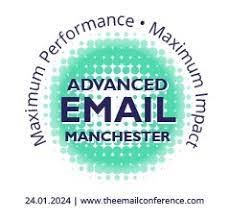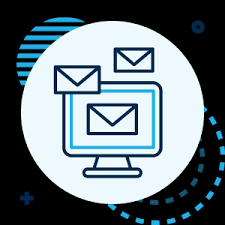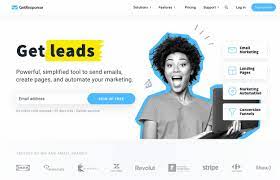When it comes to effective digital marketing strategies, email marketing continues to be a powerful tool for businesses of all sizes. With its ability to deliver targeted messages directly to a subscriber’s inbox, email marketing allows brands to engage with their audience on a personal level. To inspire your email campaigns and help you achieve better results, let’s explore some of the best email marketing examples.
Airbnb:
Airbnb is known for its visually appealing and personalized emails. They send out tailored recommendations based on the user’s search history and preferences. By showcasing unique accommodations and experiences, Airbnb effectively captures the attention of their subscribers, encouraging them to book their next adventure.
Grammarly:
Grammarly, an online writing assistant tool, stands out with its simple yet impactful emails. They understand their audience’s pain points and provide solutions by highlighting grammar errors or suggesting improvements in writing style. Their clean design and concise copy make it easy for users to take action and download the Grammarly extension.
Buzzfeed:
Buzzfeed is a master of creating engaging content, and they carry this expertise into their email marketing campaigns as well. Their newsletters are packed with catchy subject lines, captivating images, and compelling snippets of content that leave readers wanting more. By teasing articles and quizzes within their emails, Buzzfeed successfully drives traffic back to their website.
REI:
REI, an outdoor retail company, excels at using storytelling in their emails. They connect with their customers by sharing inspiring stories from real adventurers who use their products. By combining stunning visuals with genuine narratives, REI creates an emotional connection that resonates with their audience while promoting their products subtly.
Spotify:
Spotify keeps its subscribers engaged by delivering personalized music recommendations through email. They curate playlists based on individual listening habits or events like birthdays or anniversaries. By providing value through tailored content suggestions, Spotify increases user loyalty while promoting new features or premium subscriptions.
Kate Spade:
Kate Spade’s emails are a perfect example of how to blend product promotion with lifestyle inspiration. Their emails feature beautifully styled images, showcasing their products in real-life scenarios. By incorporating fashion tips, gift ideas, and exclusive offers, Kate Spade creates a sense of exclusivity and encourages subscribers to explore their latest collections.
Nike:
Nike’s email marketing campaigns focus on driving engagement and creating a sense of community among their customers. They frequently send emails highlighting new product releases, athlete stories, and fitness challenges. By leveraging the power of storytelling and encouraging user-generated content through hashtags or challenges, Nike builds a strong connection with its audience.
These examples demonstrate the importance of personalization, compelling visuals, storytelling, and providing value to subscribers in email marketing campaigns. By incorporating these elements into your own strategies, you can create engaging and effective email campaigns that resonate with your audience, drive conversions, and ultimately grow your business.
8 Frequently Asked Questions About Best Email Marketing Examples: A Comprehensive Guide for Improving Your Business
- What are the best email marketing examples?
- How can I use email marketing to improve my business?
- What elements should be included in an effective email marketing campaign?
- How do I create a successful email marketing strategy?
- What are the most important metrics to track with an email campaign?
- How do I ensure my emails reach their intended recipients?
- What tips and tricks can be used for better email design and content creation?
- How often should I send out emails as part of my campaign?
What are the best email marketing examples?
There are numerous outstanding email marketing examples that have proven to be highly effective in engaging subscribers and driving conversions. Here are some of the best ones:
- Airbnb: Airbnb sends personalized recommendations based on users’ search history and preferences, enticing them to book accommodations or experiences that align with their interests.
- Grammarly: Grammarly’s emails provide value by highlighting grammar errors or suggesting writing improvements. Their clean design and concise copy make it easy for users to take action.
- Buzzfeed: Buzzfeed’s newsletters contain catchy subject lines, captivating images, and snippets of content that leave readers wanting more. They effectively drive traffic back to their website by teasing articles and quizzes within their emails.
- REI: REI uses storytelling in their emails, sharing inspiring stories from real adventurers who use their products. Their stunning visuals and genuine narratives create an emotional connection with the audience while subtly promoting their products.
- Spotify: Spotify delivers personalized music recommendations through email, curating playlists based on individual listening habits or special occasions like birthdays. By providing tailored content suggestions, they increase user loyalty while promoting new features or premium subscriptions.
- Kate Spade: Kate Spade blends product promotion with lifestyle inspiration in their emails. They feature beautifully styled images showcasing their products in real-life scenarios, incorporating fashion tips, gift ideas, and exclusive offers to create a sense of exclusivity.
- Nike: Nike focuses on driving engagement and building a community through its email marketing campaigns. They highlight new product releases, athlete stories, and fitness challenges while encouraging user-generated content through hashtags or challenges.
These examples demonstrate the importance of personalization, compelling visuals, storytelling, providing value to subscribers, and creating a sense of community in successful email marketing campaigns. By incorporating these elements into your own strategies, you can create engaging emails that resonate with your audience and drive conversions for your business.
How can I use email marketing to improve my business?
Email marketing can be a powerful tool to improve your business in several ways. Here are some key strategies to consider:
- Build and nurture relationships: Use email marketing to build a strong relationship with your audience. Regularly send valuable content, such as newsletters, industry insights, or exclusive offers, to keep your subscribers engaged and interested in your brand.
- Increase brand awareness: Use email campaigns to increase brand visibility and awareness. Consistently communicate your brand’s message, values, and unique selling points to reinforce your presence in the minds of your subscribers.
- Drive traffic to your website: Include links in your emails that direct recipients back to relevant content on your website. This can help increase website traffic and engagement with your products or services.
- Generate leads: Utilize lead magnets, such as free e-books, webinars, or exclusive discounts, to encourage visitors to join your email list. Once they’re subscribed, nurture these leads with targeted emails that provide further value and guide them towards making a purchase.
- Promote products or services: Use email marketing campaigns strategically to promote new product launches, seasonal sales, or limited-time offers. Craft compelling copy and visuals that entice subscribers to take action and make a purchase.
- Segment your audience: Divide your email list into segments based on demographics, interests, or purchasing behavior. This allows you to send more personalized campaigns tailored specifically to each segment’s preferences and needs.
- Automate workflows: Implement automated email workflows triggered by specific actions or events (e.g., welcome series for new subscribers or abandoned cart reminders). Automation saves time while ensuring consistent communication with customers at crucial stages of their journey.
- Gather feedback and insights: Engage with subscribers by sending surveys or requesting feedback via email. This helps you understand their preferences better and make informed business decisions based on their input.
- Measure performance: Track key metrics such as open rates, click-through rates, and conversions to evaluate the effectiveness of your email campaigns. Use this data to refine and optimize your strategies over time.
- Provide exceptional customer service: Use email marketing not only for promotional purposes but also to provide excellent customer service. Send order confirmations, shipping updates, or post-purchase follow-ups to ensure a positive experience and foster customer loyalty.
Remember, successful email marketing requires planning, consistency, and delivering value to your subscribers. By implementing these strategies effectively, you can leverage the power of email marketing to improve your business’s growth, customer engagement, and overall success.
What elements should be included in an effective email marketing campaign?
To create an effective email marketing campaign, several key elements should be included. These elements work together to engage your audience, deliver your message effectively, and drive the desired actions. Here are the essential components of an effective email marketing campaign:
- Clear and Compelling Subject Line: A strong subject line is crucial as it determines whether recipients open your email or not. It should be concise, attention-grabbing, and accurately reflect the content of the email.
- Personalization: Tailor your emails to each recipient by using their name or other relevant information. Personalization helps create a sense of connection and increases engagement.
- Engaging Content: Provide valuable and relevant content that resonates with your audience. Whether it’s informative articles, special offers, or exclusive content, make sure it aligns with their interests and needs.
- Call-to-Action (CTA): Clearly define the action you want recipients to take in response to your email. Use a prominent CTA button or link that stands out visually and leads them to a specific landing page or desired action.
- Mobile Responsiveness: Ensure your emails are optimized for mobile devices since many people check their emails on smartphones or tablets. A responsive design ensures that your emails display properly across different screen sizes.
- Visually Appealing Design: Use eye-catching visuals such as images, videos, and graphics that align with your brand identity. A visually appealing design captures attention and enhances the overall user experience.
- Segmentation: Divide your subscriber list into segments based on demographics, interests, purchase history, or engagement level. This allows you to send targeted emails that resonate with each segment’s specific needs and preferences.
- Automation: Utilize automation tools to send timely and relevant emails based on triggers like sign-ups, purchases, or abandoned carts. Automation saves time while ensuring consistent communication with subscribers.
- Testing and Optimization: Continuously test different elements of your email campaigns, including subject lines, CTAs, visuals, and content. Analyze the results and make data-driven decisions to optimize your future campaigns for better performance.
- Compliance with Legal Requirements: Ensure compliance with email marketing regulations, such as obtaining permission from recipients to send emails and providing an option to unsubscribe. Familiarize yourself with laws like GDPR (General Data Protection Regulation) or CAN-SPAM Act to maintain a good reputation and avoid legal issues.
By incorporating these elements into your email marketing campaigns, you can create engaging, personalized, and effective communication that drives engagement, conversions, and customer loyalty.
How do I create a successful email marketing strategy?
Creating a successful email marketing strategy requires careful planning and execution. Here are some key steps to help you get started:
- Define your goals: Determine what you want to achieve with your email marketing efforts. Whether it’s increasing sales, driving website traffic, or building customer loyalty, having clear goals will guide your strategy.
- Build a quality subscriber list: Focus on growing an engaged and targeted subscriber list. Offer valuable incentives such as exclusive content, discounts, or free resources to encourage sign-ups. Ensure that subscribers have given their consent to receive emails from you.
- Segment your audience: Divide your subscriber list into smaller segments based on demographics, interests, purchase history, or engagement levels. This allows you to send more personalized and relevant content to each group.
- Craft compelling subject lines: Grab the attention of your subscribers with captivating subject lines that entice them to open the email. Keep them concise, clear, and relevant to the content inside.
- Create engaging content: Develop high-quality content that resonates with your audience. Use a mix of educational information, entertaining stories, promotional offers, and exclusive updates to keep subscribers interested and engaged.
- Design visually appealing emails: Use eye-catching visuals, including images and videos, in your emails to make them visually appealing and enhance the overall user experience. Ensure that your design is mobile-responsive for optimal viewing on different devices.
- Personalize your messages: Address subscribers by name and tailor the content based on their preferences or past interactions with your brand. Personalization helps build a stronger connection with recipients and increases the likelihood of engagement.
- Test and optimize: Continuously test different elements of your emails such as subject lines, call-to-action buttons, layouts, and timing to identify what resonates best with your audience. Use analytics tools to track open rates, click-through rates (CTRs), conversions, and other metrics for insights into performance.
- Automate campaigns: Implement automation workflows to send targeted emails based on specific triggers or actions, such as welcome emails, abandoned cart reminders, or birthday greetings. Automation saves time and ensures timely communication with subscribers.
- Monitor and analyze results: Regularly review your email marketing metrics to assess the success of your campaigns. Analyze open rates, CTRs, conversion rates, and unsubscribe rates to identify areas for improvement and make data-driven decisions.
- Maintain regulatory compliance: Familiarize yourself with email marketing regulations, such as GDPR or CAN-SPAM Act, to ensure that you comply with all legal requirements regarding data protection and unsubscribe requests.
Remember that building a successful email marketing strategy takes time and continuous refinement. By understanding your audience, delivering valuable content, and optimizing your campaigns based on data-driven insights, you can achieve better engagement, conversions, and overall business growth.
What are the most important metrics to track with an email campaign?
When running an email campaign, it’s crucial to track certain metrics to evaluate its performance and effectiveness. Here are some of the most important metrics to monitor:
- Open Rate: This metric indicates the percentage of recipients who opened your email. It helps measure the effectiveness of your subject lines and overall campaign visibility.
- Click-Through Rate (CTR): The CTR measures the percentage of recipients who clicked on a link within your email. It shows how engaging and compelling your content is, as well as the effectiveness of your call-to-action.
- Conversion Rate: The conversion rate tracks the percentage of recipients who completed a desired action, such as making a purchase, filling out a form, or signing up for a newsletter. It provides insights into how well your email campaign is driving actual conversions.
- Bounce Rate: Bounces occur when an email fails to deliver to a recipient’s inbox. Bounce rate measures the percentage of emails that didn’t reach their intended destination. High bounce rates may indicate issues with your email list quality or technical problems.
- Unsubscribe Rate: This metric represents the percentage of subscribers who opted out from receiving future emails from you. Monitoring unsubscribe rates helps assess whether your content is relevant and engaging enough to retain subscribers.
- Spam Complaint Rate: Spam complaints occur when recipients mark your emails as spam or unwanted messages. A high spam complaint rate can negatively impact your sender reputation and deliverability rates.
- Revenue/ROI: If generating revenue is one of your campaign goals, tracking revenue generated directly from email marketing efforts is crucial for assessing its profitability and return on investment (ROI).
- List Growth Rate: This metric measures how quickly your subscriber list is growing over time. A healthy list growth rate indicates that you are attracting new subscribers effectively and retaining existing ones.
- Engagement Metrics: These include metrics like time spent reading an email, number of shares or forwards, or social media interactions. These metrics provide insights into how well your content resonates with your audience and encourages engagement beyond the email itself.
By regularly monitoring these metrics, you can gain valuable insights into the performance of your email campaigns, identify areas for improvement, and make data-driven decisions to optimize future campaigns.
How do I ensure my emails reach their intended recipients?
Ensuring that your emails reach their intended recipients is crucial for the success of your email marketing campaigns. Here are some best practices to help you improve deliverability:
- Build a quality email list: Start by obtaining permission-based opt-ins from your subscribers. Avoid purchasing or using third-party lists, as they often contain outdated or irrelevant email addresses. Focus on growing an organic and engaged subscriber base.
- Use double opt-in: Implement a double opt-in process where subscribers confirm their email address after signing up. This helps to ensure that the email addresses provided are valid and owned by the intended recipients.
- Maintain good sender reputation: ISPs (Internet Service Providers) evaluate the reputation of senders to determine whether emails should be delivered to the inbox or flagged as spam. Monitor your sender reputation by regularly checking your deliverability rates and keeping an eye on any blacklisting reports.
- Authenticate your emails: Implement authentication protocols like SPF (Sender Policy Framework), DKIM (DomainKeys Identified Mail), and DMARC (Domain-based Message Authentication, Reporting, and Conformance). These protocols verify that the emails you send are genuine and not forged, increasing deliverability rates.
- Optimize subject lines and content: Avoid using spam trigger words or excessive capitalization in subject lines, as they can increase the chances of your emails being flagged as spam. Craft compelling subject lines that accurately represent the content of your emails to encourage higher open rates.
- Segment your email list: Divide your subscribers into segments based on demographics, interests, or engagement levels. By sending targeted and relevant content to specific segments, you can improve engagement rates and reduce the likelihood of recipients marking your emails as spam.
- Regularly clean your email list: Remove inactive or bouncing email addresses from your list periodically to maintain a healthy subscriber base. High bounce rates can negatively impact deliverability rates, so it’s important to keep your list up-to-date.
- Monitor engagement metrics: Pay attention to metrics like open rates, click-through rates, and spam complaints. ISPs consider these engagement signals when determining whether your emails are valuable to recipients. Analyze these metrics and adjust your email strategies accordingly.
- Test before sending: Always test your emails across different email clients and devices to ensure they display correctly. Check for broken links, formatting issues, or any other elements that may hinder deliverability or user experience.
- Monitor deliverability and make adjustments: Keep a close eye on your email deliverability rates and take action if you notice any significant drops. Investigate the potential causes, such as changes in email content or sending practices, and make necessary adjustments to improve deliverability.
By following these best practices, you can increase the chances of your emails reaching their intended recipients’ inboxes and maximize the effectiveness of your email marketing campaigns.
What tips and tricks can be used for better email design and content creation?
To create better email designs and compelling content, consider the following tips and tricks:
- **Keep it visually appealing**: Use a clean and visually appealing design that aligns with your brand. Incorporate eye-catching images, colors, and fonts to make your emails visually appealing and engaging.
- **Responsive design**: Ensure your emails are mobile-friendly and responsive. With the majority of people accessing emails on their mobile devices, it’s crucial to optimize your designs for different screen sizes.
- **Clear and concise subject lines**: Craft subject lines that are clear, concise, and compelling. A strong subject line grabs attention and entices recipients to open the email. Avoid using misleading or spammy subject lines that may harm your reputation.
- **Personalization**: Personalize your emails by addressing recipients by their name or segmenting your email list based on demographics or past interactions. Tailor the content to suit their preferences or previous buying behavior for a more personalized experience.
- **Compelling copy**: Write concise, relevant, and engaging copy that gets straight to the point. Use persuasive language, storytelling techniques, and compelling calls-to-action (CTAs) to encourage readers to take the desired action.
- **Clear hierarchy**: Organize your email content with a clear hierarchy so that readers can quickly scan through it. Use headings, subheadings, bullet points, and short paragraphs to make it easier for recipients to digest the information.
- **CTA placement**: Place your call-to-action buttons prominently within the email so they are easily visible without excessive scrolling. Make them stand out with contrasting colors or bold fonts to encourage click-throughs.
- **A/B testing**: Experiment with different elements of your email design and content by conducting A/B tests. Test variations of subject lines, visuals, CTAs, or even different layouts to identify what resonates best with your audience.
- **Segmentation**: Segment your email list based on various criteria such as demographics, interests, or purchase history. This allows you to send more targeted and relevant content to specific groups, increasing the chances of engagement and conversions.
- **Testing and optimization**: Continuously test and optimize your email campaigns based on performance metrics. Analyze open rates, click-through rates, and conversion rates to identify areas for improvement and refine your future campaigns.
By implementing these tips and tricks, you can enhance the design and content of your emails, leading to better engagement, increased conversions, and stronger relationships with your subscribers.
How often should I send out emails as part of my campaign?
The frequency of sending emails as part of your campaign is an important consideration. Finding the right balance is crucial to keep your audience engaged without overwhelming them. Here are some guidelines to help you determine how often you should send out emails:
- Consider your audience: Understand the preferences and expectations of your target audience. Some people may prefer frequent updates, while others may prefer less frequent communication. Analyze their behavior, engagement levels, and feedback to gauge their interest.
- Set clear goals: Define the purpose of your email campaign and align it with your business objectives. If you have time-sensitive promotions or limited offers, you may need to send more frequent emails. However, if your content is more informational or educational, a less frequent schedule might be appropriate.
- Test and analyze: Conduct A/B testing to determine the optimal frequency for your specific audience. Split your subscribers into groups and send emails at different frequencies (e.g., once a week versus twice a month). Analyze open rates, click-through rates, and unsubscribe rates to identify patterns and preferences.
- Quality over quantity: Focus on delivering high-quality content rather than bombarding your subscribers with excessive emails. Ensure that each email provides value, whether it’s through educational information, exclusive offers, or personalized recommendations.
- Segment your list: Segmenting your email list based on subscriber preferences, interests, or demographics allows you to tailor content specifically for each group. This way, you can send targeted emails to different segments at appropriate intervals without overwhelming anyone.
- Monitor engagement metrics: Keep a close eye on key performance indicators such as open rates, click-through rates, conversion rates, and unsubscribe rates. If you notice a decline in engagement or an increase in unsubscribes, it may indicate that you’re sending too many emails or not providing enough value.
- Allow for flexibility: Be flexible in adjusting the frequency based on subscriber feedback and changing market dynamics. Regularly review your email campaign performance and adapt accordingly to ensure optimal engagement.
Remember, there is no one-size-fits-all answer to how often you should send emails. It depends on your audience, content type, and campaign goals. By monitoring metrics, testing different frequencies, and listening to your subscribers’ feedback, you can find the right balance that keeps your audience engaged and maximizes the effectiveness of your email campaign.




